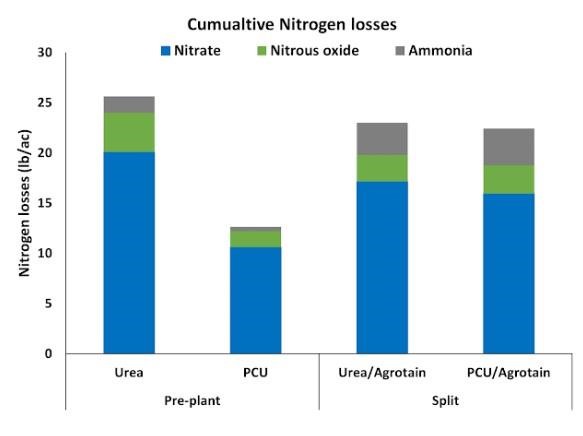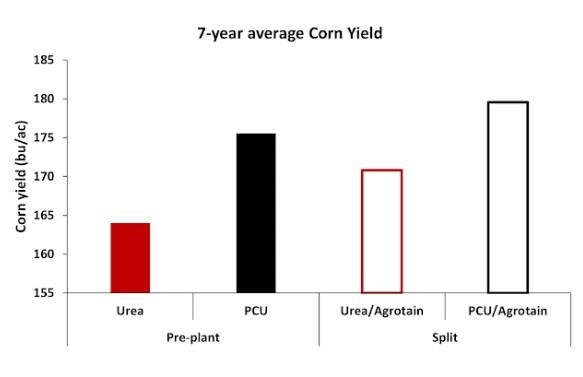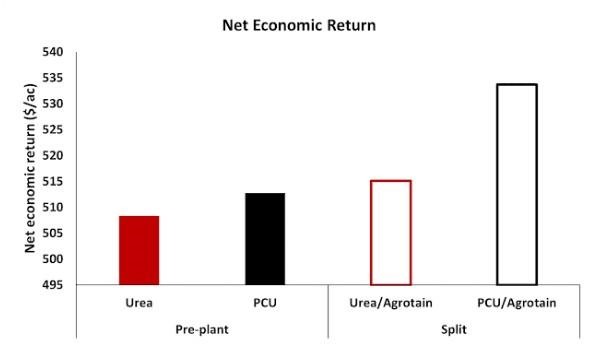Traditional vs advanced N practices
In our recent study, we evaluated traditional pre-plant urea application against advanced management practices, including split applications and using PCU at pre-plant. We used the same rate of 180 lbs N/ac across the study. Split applications consisted of one-third of the total N rate applied as either pre-plant urea or PCU and two-thirds applied around V6 as urea with a urease inhibitor (Agrotain). We compared their effects on 1) N losses (N2O and NH3 volatilization and NO3 leaching in tile drainage), 2) corn yield, and 3) net economic return. The study was conducted on a continuous corn cropping system in a poorly drained soil in Lamberton, Minnesota.
Urea applied at pre-plant resulted in lower corn yields and net economic returns and was the least efficient practice to reduce N loss. Pre-plant application of PCU reduced N losses, especially in wet years that created ideal conditions for N losses. Corn yield for pre-plant PCU was between pre-plant urea and the split application with PCU. Net economic return for pre-plant PCU was also between pre-plant urea and the split applications. The split applications were not efficient in reducing N loss, but the split application including PCU produced more grain yield and greater net economic returns than pre-plant PCU.

Measurements were done 2015-2020 for nitrate, 2018-2020 for nitrous oxide, and 2019-2020 for ammonia.


For the net economic return calculations, the following was used:
- Corn price = $3.5/bu
- Urea price= $0.34/lb N
- PCU price = $0.54/lb N
- Agrotain price = $0.39/lb N
- Pre-plant application cost = $4.5/ac
- Split application cost = $11/ac
What should you consider before choosing an N management practice?
Both profitability and environmental protection are important. The traditional single application of urea at pre-plant is a lose-lose situation as it has the greatest potential for negative environmental impact and lowest grain yield and net economic return. The advanced N practices were beneficial but not consistent across all three effects being evaluated. Even though the split applications resulted in the greatest net economic return, it did not reduce N loss substantially relative to the traditional pre-plant urea application. Using pre-plant PCU reduced N losses relative to the split applications and the traditional pre-plant urea application. However, pre-plant PCU had a lower net economic return than either of the split applications and only a slightly greater economic return than the traditional pre-plant urea application (the increase in yield with PCU was just enough to pay for the added cost of PCU compared to urea).
Based on what we have learned from this study, we are currently evaluating other practices with an emphasis on various blends of PCU and urea applied at different times to reduce N loss and increase grain yield and net economic return. We are doing this study during two growing seasons at four locations throughout Minnesota. Stay tuned for more as results from the new study start to come in!
Source : umn.edu